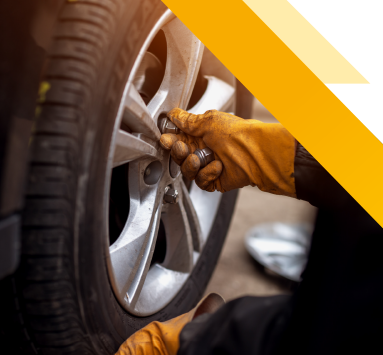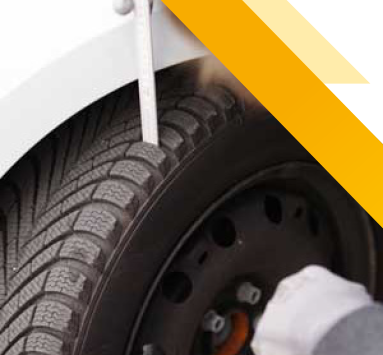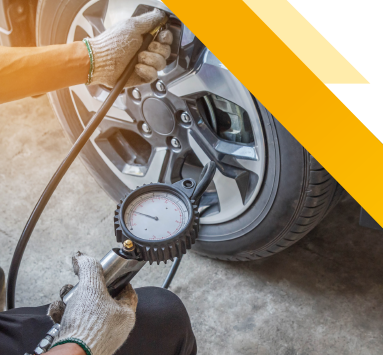Safely on the move with Sentury tyres
A tyre contains a wealth of information. From tyre size to tyre type, production date, and whether it meets the winter or snow tyre standard (M+S), along with maximum load and speed ratings. Moreover, legal obligations concerning tyres include minimum tread depth requirements. Here, we’ll delve into general tyre information.

When do I have to replace my tyres?
It’s advisable to have your tyres regularly inspected by a specialist. This helps identify potential issues early, extending tyre life and preventing dangerous situations.
1. Modern car tyres are typically well protected against punctures. However, if you do experience a flat tyre, stop promptly and replace the tyre. Always have a flat tyre removed from the rim to inspect for any further damage. If repair is necessary, do it as soon as possible to prevent further internal damage.
2. While the legal minimum tread depth in Europe is 1.6 mm (4 mm for winter tyres), it’s recommended to replace tyres when the tread depth reaches 2 mm. Tread wear indicators, known as TWI, are located in the tread grooves. When the tread wears down to these indicators, the minimum legal tread depth has been reached.
3. Certain external factors can cause damage to the tyre. This includes sharp objects like nails and screws, as well as curbs or other obstacles. If the damage is severe enough to affect the tyre’s carcass or is visible, the tyre should be replaced. When in doubt, it’s wise to have the tyre assessed by a specialist.
The tread depth of a tyre
New tyres typically have between 7 millimetres and 9.5 millimetres of tread depth, depending on the type. The tread provides optimal performance under varying weather conditions. The legal minimum tread depth for all passenger car tyres in Europe is 1.6 millimetres. However, it’s safer to replace tyres when they reach a tread depth of 2 millimetres. Winter tyres are an exception to the rule, with the recommendation to replace them at 4 millimetres.
Within the tyre tread, there are wear indicators called TWI (Tread Wear Indicators) that signal the approach of the wear limit.


What is the correct tyre pressure?
Regularly checking your tyre pressure is crucial. It helps prevent unnecessary wear and tear and maintains optimal driving and braking performance. Correct tyre pressure reduces the risk of aquaplaning and minimises rolling resistance, thus extending tyre life. Check your tyre pressure at least once every two months, including your spare wheel.
The recommended tyre pressure for your vehicle can be found in the owner’s manual or on a sticker affixed by the manufacturer, typically located on the doorposts of the front doors, on the back of the sun visor, or inside the fuel flap.
